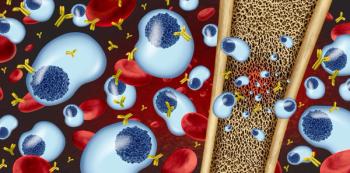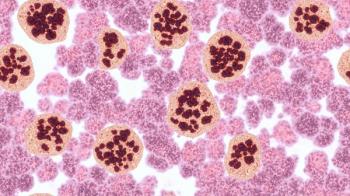
Study: Visceral Fat is Predictor of Liver Fibrosis, Fibrosis Progression in People With HIV
The findings highlight the critical role played by excess visceral adiposity in the progression of fibrosis among HIV-infected patients with nonalcoholic fatty liver disease, according to the study authors.
A study by the Harvard Medical School demonstrated how visceral fat is a clinical predictor of liver fibrosis and liver fibrosis progression, according to an oral presentation during the Conference on Retroviruses and Opportunistic Infections 2020 conference.1
The findings highlight the critical role played by excess visceral adiposity in the progression of fibrosis among HIV-infected patients with nonalcoholic fatty liver disease, according to the study authors.1
A randomized, double-blind study was conducted with identical placebo as a comparator in a hospital and a medical research center in the United States. Participants with HIV infection and a hepatic fat fraction (HFF) of 5% or more by proton magnetic resonance spectroscopy were eligible. Patients were randomly assigned to receive either tesamorelin 2 mg once daily or placebo once daily for 12 months, followed by a 6-month open-label phase, during which all participants received tesamorelin 2 mg daily.2
The randomization list was prepared by the study statistician using a permuted block algorithm within each stratum with randomly varying block sizes. The primary endpoint was change in HFF between baseline and 12 months.2
Sixty-one patients were enrolled between August 20, 2015, and January 16, 2019, with 30 patients receiving tesamorelin and 30 receiving placebo. Those who received tesamorelin had a greater reduction of HFF than did patients receiving placebo, with an absolute effect size of -4.1% relative reduction from baseline.2
Changes in fasting glucose and glycated haemoglobin were not different between groups at 12 months. Individuals in the tesamorelin group experienced more localized injection site complaints than those in the placebo group.2
After 12 months of treatment, liver fat in patients on tesamorelin decreased by 32% whereas it increased by 5% in placebo patients from baseline, amounting to a 37% relative reduction in liver fat. Furthermore, 35% of patients in the tesamorelin group returned to liver fat values below 5% compared with only 4% of patients on placebo.1
In conclusion, the study showed that only 10.5% of patients in the tesamorelin group experienced progression of liver fibrosis compared with 37.5% in patients receiving a placebo.1
REFERENCES
- Visceral fat is a predictor of liver fibrosis and fibrosis progression in people living with HIV [news release]. Montreal, CA; Thera Technologies: March 11, 2020.
- Stanley TL, Fourman LT, Feldpausch MN, et al. Effects of tesamorelin on non-alcoholic fatty liver disease in HIV: a randomized, double-blind, multicenter trial. The Lancet HIV. 2019; 6(12): PE821-E830. doi: https://doi.org/10.1016/S2352-3018(19)30338-8.
Newsletter
Stay informed on drug updates, treatment guidelines, and pharmacy practice trends—subscribe to Pharmacy Times for weekly clinical insights.




















































































































































































































